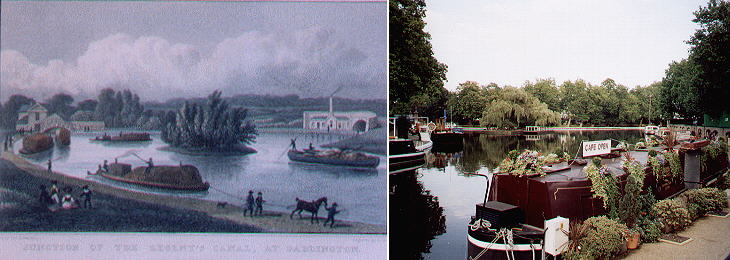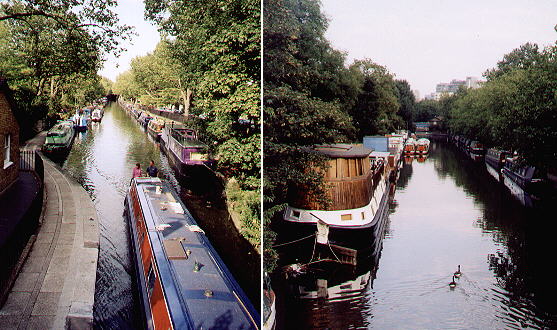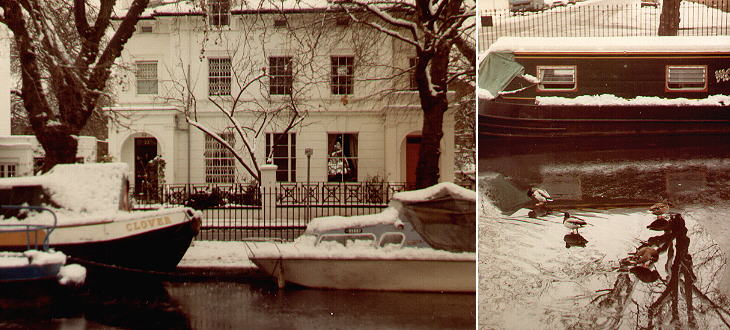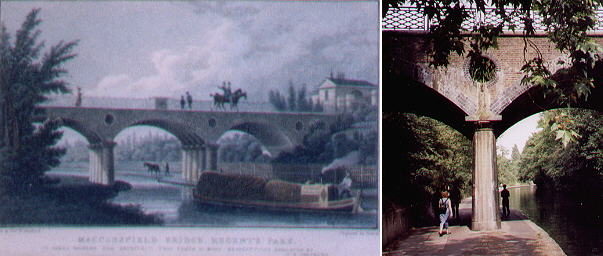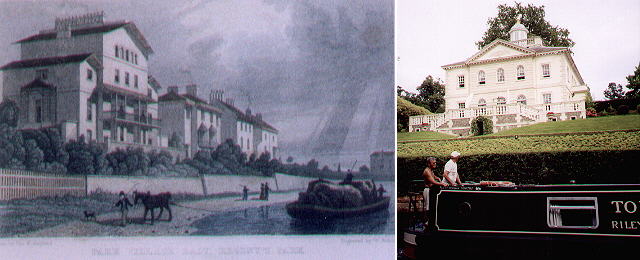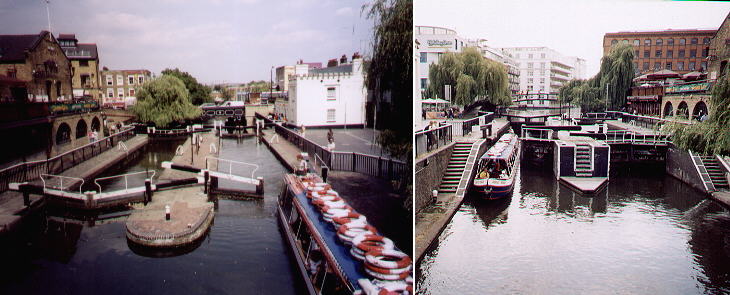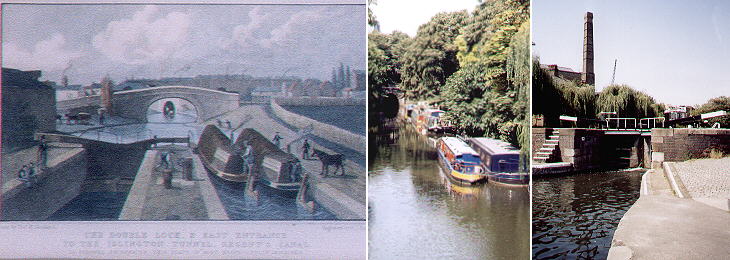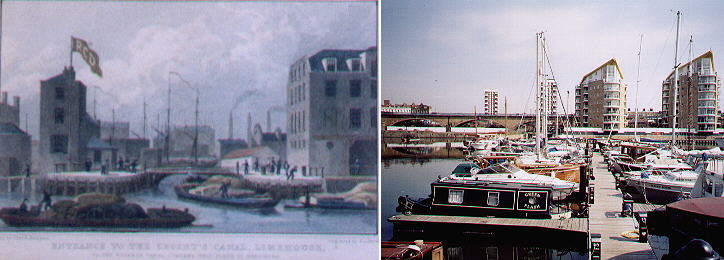  What's New! Detailed Sitemap All images © by Roberto Piperno, owner of the domain. Write to romapip@quipo.it. Text edited by Rosamie Moore. |
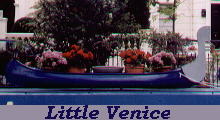
In 1981 I was transferred to London and I was granted a house hunting trip for relocating there. The lady who was assisting me had arranged a series of visits to flats for sale and had sent me a list: when I read "one bedroom spacious flat in Little Venice" I was puzzled and very curious to see the flat and discover why the location was called Little Venice: when I saw it, it was love at first sight and I bought the flat.
Little Venice is the name given to the junction between a canal leading to the Paddington basin, next to the London railway station by the same name, and the Regent's canal. The canal was opened in 1801. It forms a triangular basin with a little islet, hence the reference to Venice. The gardens near the islet are now named after Rembrandt with a reference to another Venice, Amsterdam which shares with Stockholm the appellation of Venice of the North. Little Venice can be easily reached by Warwick Avenue Underground Station or by car from Marble Arch going northwards through Edgware Road and turning left after a mile in Maida Avenue. The Regent's Canal is also known as the Grand Union Canal, the latter being formed in 1929 by the union of several canals. It is part of the formidable network of waterways which supported the industrial revolution in Great Britain prior to the development of railways. The XIXth century print shows a barge pulled by a horse and at the same time making use of a small steam-engine: it is a metaphoric representation of the transition between the two power sources.
Today it is no longer economical to use the canal to ship commodities: the long and narrow barges have been converted into holiday floating houses. Along the canal there is a tow path which allows those who do not possess a narrow boat to use the canal for a pleasant walk without the noise of cars and the smell of their emissions.
On the coldest days of London's winter a layer of ice is thick enough to support the canal ducks. On most Sundays I used to walk along the canal from Little Venice to Camden Town, where the area of the locks hosts a weekly street market.
The iron columns of Macclesfield Bridge in Regent's Park still show the marks caused by the attrition with the ropes linking the barges to the towing horses.
Regent's Park is home to the London Zoo which can be reached via a narrow boat cruise service from Little Venice. The service ends at Camden Lock. A few stately private mansions have a direct access to the canal.
Travelling by barge is not recommended to those who are in a hurry, while it is perfect for those who enjoy a slower approach to everyday living. The engineers who designed the canal had to deal with the hilly areas of Camden and Islington and a series of locks raises the level of the water.
At Islington a long and narrow tunnel cuts through the hill and from this point the canal goes down towards the Thames.
The Regent's Canal meets the Thames at Limehouse Basin. The old print shows the full vigour of the British Empire, built more on the strength of its manufacturing and trading skills than on the power of its armies. It is a pity that such an interesting area has been turned into a second rate Marbella-like marina. If you want to learn more about British canals, visit the London Canal Museum.     |
